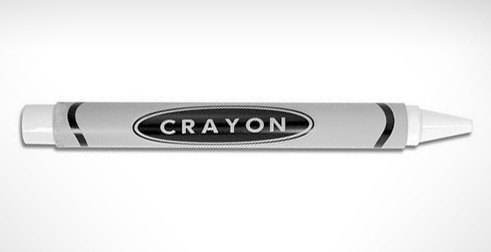Color Yourself Successful

Color communicates. It can provide direction and clarity. When language fails color can offer valuable associations with people, places and things. Shamrock green. Fire engine red. School bus yellow. Midnight black. Sky blue. The mere act of reading those words evokes distinct images and feelings. Color induces subtle emotions and elicits powerful responses. Because color's impact is so profound its role as a brand signal should not be underestimated.
Humans process, store and remember images more efficiently with color. A study conducted by the University of Loyola, Maryland concluded that color increases brand recognition by up to 80%. Over time, thoughtful and consistent use of color becomes emblematic of a brand and can be as powerful an identifier as the corporate name and logo.
Automotive icon Enzo Ferrari once said of his namesake sports cars, "It's not a Ferrari if it's not red". And, of course, Ferraris are no ordinary red, they're Rosso Corsa (race red) – the official Fédération Internationale de l'Automobile designated racing color of Italy. With one vivid stroke a single color identifies the company and products, symbolizes their raison d'etre, and embodies the proud racing heritage of a nation. The effects are profound.
Ferrari is one example of many leading global brands that have utilized the associative and emotional impact of color to create an advantage. Consider the iconic green and yellow of John Deere tractors and farm equipment; so woven into the fabric and history of the heartland they’re almost as American as red, white and blue.
In the mid nineties Apple infused color into the beige world of computers with the vibrant launch of the iMac. Today, a brilliant spectrum of iPhones, iPads, iPods, and Apple Watches are available, while lack of color provides a vivid visual cue for the corporate brand, with minimal black, white and gray tones befitting the elegant simplicity of their designs and user experience.
Color can cheer your customers up or calm them down. Color can increase employee productivity or make people sick and tire them out. The right color can communicate product attributes such as flavor, freshness and purity, while the wrong color may unintentionally communicate an insulting cultural bias.
Consider these color facts when designing your brand palette:
Blue is the most liked color among adults worldwide. According to several studies, adults prefer blue, followed by red, green, purple, yellow and orange. Nearly 50% of those surveyed in an American Roper Organization study named blue as their favorite color.
Yellow is the first hue recognized by infants. At first, newborns only perceive differences between light and dark, but then their eyes are drawn to the most luminous color in the spectrum – yellow.
Blues and greens are favored by the elderly. Eye lenses yellow with advancing age, which may explain why elderly people gravitate toward hues of shorter wavelengths, and sometimes feel starved for blue.
Yellow puts people in a bad mood when overexposed. Bright lemon yellow is the most luminous color in the spectrum and the most fatiguing if viewed for long periods of time. Conversely, it is the most cheerful if seen at a glance. Studies show that couples fight more, and babies cry more, in lemon yellow rooms.
Pink has a calming effect. Interestingly, while red is the most energizing color passive pink has a sedating effect. The California children's probation department found that violent children have fewer outbursts when placed in a passive pink room. All inmates in Arizona’s Maricopa County Sheriff’s corrections facilities were once issued pink underwear.
Green is the most restful color to the eyes because its light rays fall most directly on the retina. Though considered an unflattering fashion color, green has risen in popularity as people have become more environmentally minded.
68% of the top 100 brands studied in Interbrand’s Best Global Brands 2012 report use a single color. Only 5% use more than two. 41% use black or gray; 34% use red; 32% use blue; 16% use yellow or gold.
Studies conducted by the Institute for Color Research demonstrate that consumers form initial judgments about a product within 90 seconds. Between 62% and 90% of that assessment is based on color alone. So, if color is communicating on behalf of your brand, what is it saying?
The truth is, different things to different people. Though we all see the same colors, we interpret and remember them through the lens of our varying experiences. What some view as a lovely yellow ocher others may view as, well, vomit. And, despite Enzo's decree, plenty of people don't like red cars - even Ferraris. Ultimately, color is subjective. So, what do you do when considering color options that will represent your brand? Start by keeping these tips in mind:
Select A Color You Can Own
Consider a color unique in your channel. Color associations increase brand recognition and build brand equity. That distinctive blue box with a white ribbon announces there’s no ordinary bauble inside, but a Tiffany & Co. bauble. The difference in perception is significant before the box is even opened and the gift revealed.
Consider Cultural Significance
Because color connotations vary greatly among cultures you must be aware of positive and negative associations. In China green is used for stop while red means go because red is the national symbol of communism. Chinese brides wear red to symbolize fertility, whereas in the United States a white wedding gown symbolizes purity, the color of death and mourning in many Asian cultures.
Consistency Is Critical
Whether print, pixel or paint; on paper, screen or fabric, your palette should be consistent. Your logo should appear the same color on your business card as it does on your signage or the embroidery on a uniform. Corporate colors are sacred. Coca Cola red is never Coca Cola reddish-orange.
Understand Production Processes & Technology
Electronic file formats affect color in different ways. A CMYK .eps file set up for printing does not treat color the same way as an RGB .jpg file intended for onscreen graphics. Variations will also occur between process printing and spot color printing. Coated versus uncoated papers, and gloss versus dull finishes can completely change the complexion of color. Differences can be significant - and detrimental - if care is not taken.
Consider the Costs
Mixing a truly unique color from scratch can surely produce one-of-a-kind results. However, the cost of reproducing the color for all applications can become expensive, and custom mixes are often difficult to manage and more likely to result in errors. Distinctive colors and color themes can be had by utilizing commonly available resources. The Pantone Matching System is the industry standard for printing, and provides a broad spectrum of colors. Resources like Pantone offer economical options that are easy to reproduce consistently.
Once You Own It, Really Own It
Protecting a distinctive color is as important as protecting your logo, slogan, or other visual elements of your brand identity. Trademarking your color(s) will shield you from copycats seeking to infringe upon your brand equity. A Color Trademark protects colors used to perform the trademark function of uniquely identifying the commercial origin of products or services. The UPS brown, for instance, dubbed Pullman Brown, was trademarked by the company to prevent competitors from applying it to their branding.
There’s far more to color than meets the eye. From your office spaces or retail spaces, to your mobile apps and web site, to your product packaging and printed collateral, where and how you apply color speaks volumes about your brand. Color can communicate with a whisper or a shout. Find your voice.
___
Ken Peters is Co-founding Partner and Creative Director of Nocturnal Branding Studio, a full-service branding and design agency located in Phoenix, AZ. He's been known to design for everyone from Silicon Valley giants to start-up cat toy manufacturers. His work has garnered him everything from a host of awards to a grateful kiss on the cheek. He also makes a mean teriyaki chicken dish, but it hasn't earned any awards. To talk to Ken email him at:ken@nocturnaldesign.com
©Nocturnal Studio

